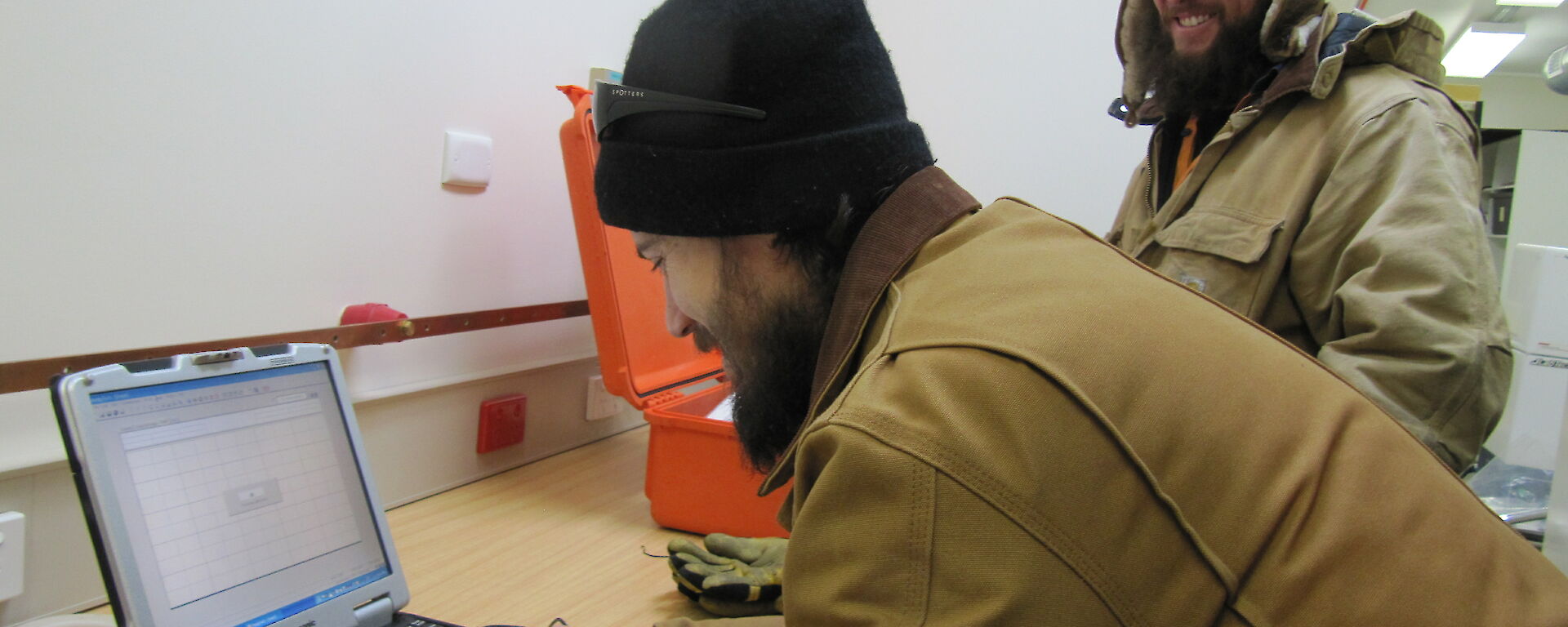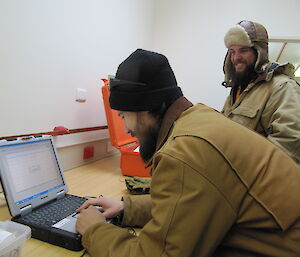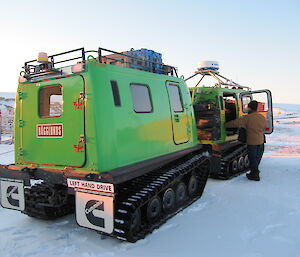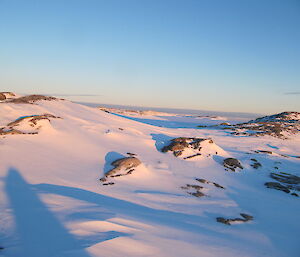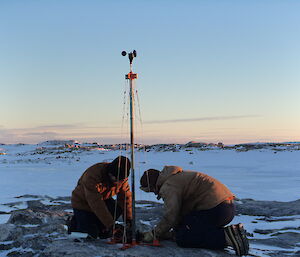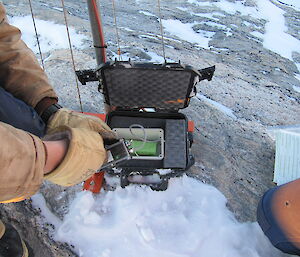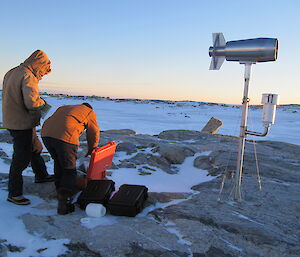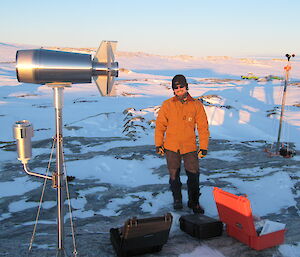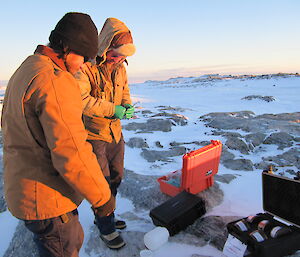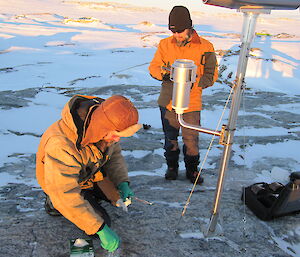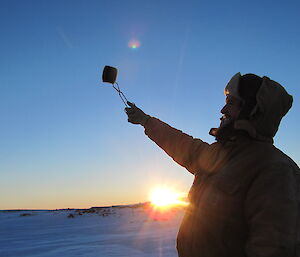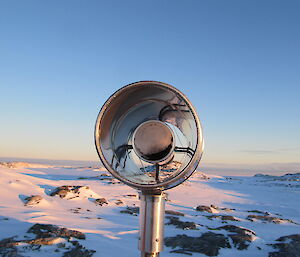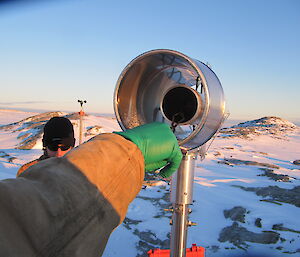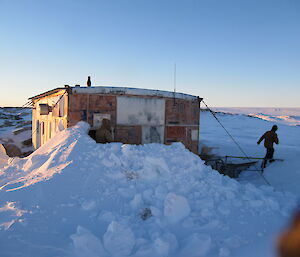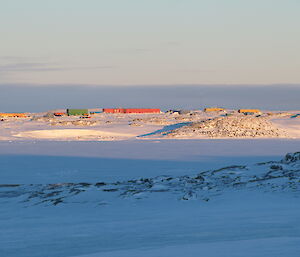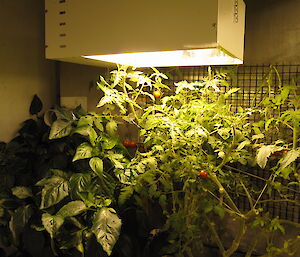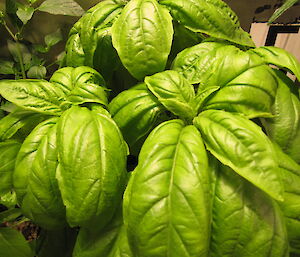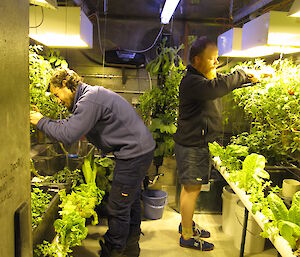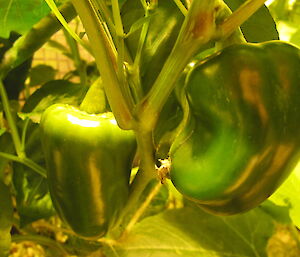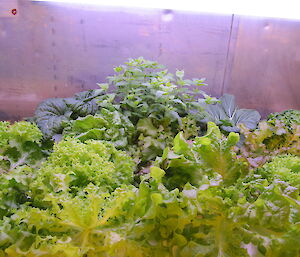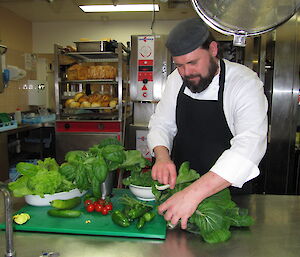One of the regular science support activities performed on station is the monthly visit to the air sampler located near the old Wilkes station, on the other side of Newcomb Bay. Station Leader Ali attended the site with Matt and myself last month to document the process and take some photos, so here is a summary of what this activity involves.
The air sampling project (officially known as part of the “Persistent Organic Pollutants (POPs) in Antarctic Air” project), involves the sampling of air from a field location for later analysis. This study was tasked to assess the chemical composition of air masses of the Australian Antarctic Territory (AAT). As a signatory to the Stockholm Convention on Persistent Organic Pollutants (POPs), Australia is committed to ongoing monitoring of POPs within its states and territories.
As over-wintering expeditioners, our primary role in regards to this project is to ensure that the filter material is replaced regularly in a controlled and consistent manner. This involves visiting the site with a fresh set of filter pads each month, which comprise of two 7.62 cm thick polyurethane foam (PUF) plugs and one 2.54 cm thick PUF plug (all 10.5 cm in diameter) loaded into a cartridge in series and mounted in an aerodynamically shaped housing on a post with a rotatable joint. The sampler-housing unit is designed to automatically face into oncoming wind, thereby increasing airflow across the sampling media surface area. A wind speed data logger is located adjacent to the sampler, the data of which can then be used to determine the volume of air that has been sampled during any collection period. The data logger is also changed out monthly, and we are always amazed that the batteries in these tiny little data loggers (about the size of a matchbox) manage to maintain power output despite the extreme conditions they are subjected to. The data is downloaded off the logger and emailed back to Australia each month, and the PUF plugs are returned during resupply when a fresh set for the following year of sampling will also arrive.
One of the biggest issues for the project thus far has been trying to keep the air sampler from blowing away! When a 110+ knot blizzard hits, it is very difficult for any isolated structure to withstand the forces applied to it. However, a recent redesign of the sampler housing by the project co-ordinators appears to be working wonders as it has survived the numerous blizzards that we have experienced so far this winter. Fingers crossed it maintains that record, as Matt and I quite enjoy our regular trips over to Wilkes to participate in this unique science project.
Shane

